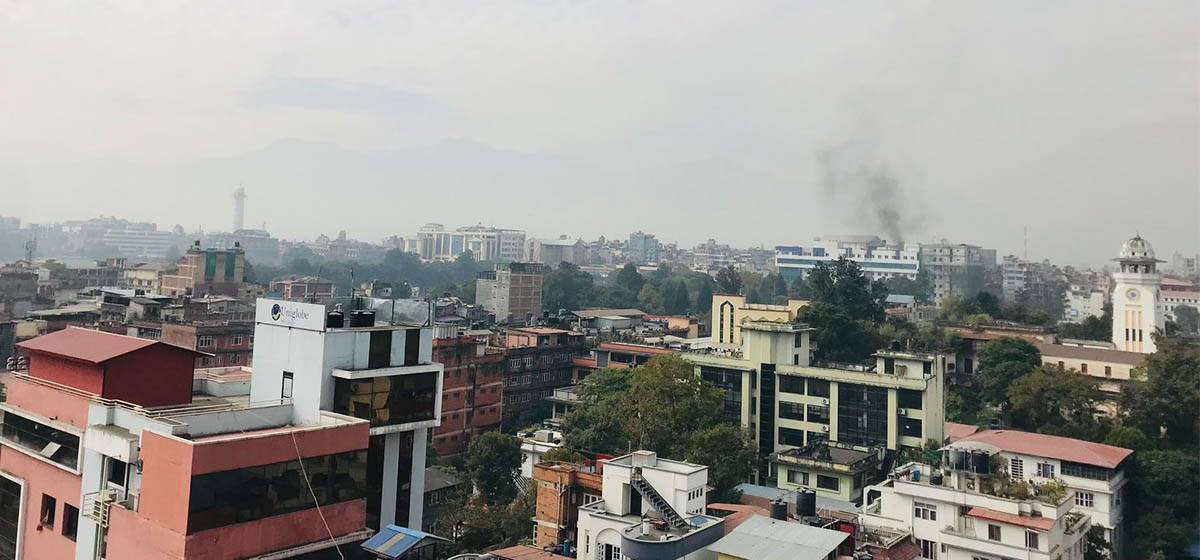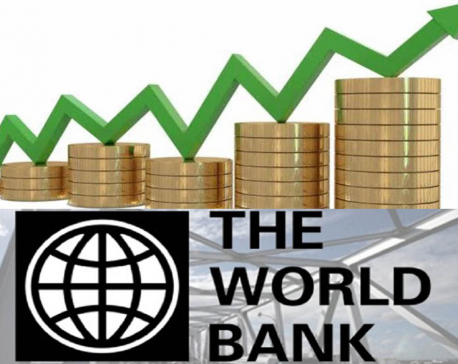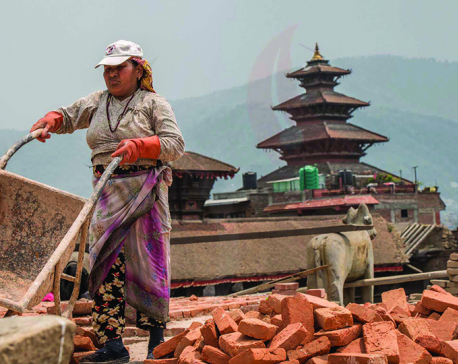
OR
#Opinion
Kathmandu: Confronting to Restore Lost Paradise
Published On: July 28, 2022 06:47 AM NPT By: Hari Prasad Shrestha

More from Author
The deteriorating and declining metropolitan image of Kathmandu is damaging its ‘Shangri La’ character. A centralized system has pushed people of outer districts to settle here, in the capital city, in search of a better future. As a result of being the main tourism hub and witnessing a large concentration of administrative establishments, and educational and health centers, Kathmandu began to gradually transform into a nasty city with all sorts of mess.
In the movie 'Doctor Strange' (2016), a place called Kamar-Taj in Kathmandu was founded as a place for sorcerers and sorceresses to train and control their powers.
People often come here after being broken or damaged — physically and psychologically. In the words of Dr Strange, “After Western medicine failed me, I headed East, and I ended up in Kathmandu.” “Kathmandu?” “Yeah.” Furthermore, the 1975 Bob Seger classic 'Katmandu' song immortalized the escapist allure of Kathmandu.
“Oh Katmandu” sang Segar. “Take me with ya 'cause I'm goin' with you. Now, if I ever get outta here, I'm going to Katmandu, oh. “ By that time, many Americans were searching for enlightenment, and the city of Kathmandu was seen as a panacea for the ills of western culture. A remote and exotic location, it was also seen as the ultimate getaway, which is how Seger used it in this song.
Likewise, Kathmandu was a paradise for the Hippies before the 1970s when cannabis was legal to smoke here. Erstwhile, as smoking was a part of Nepali culture, they found the city a place of eternal peace and satisfaction. These faiths portray how Kathmandu was a center of attraction for westerners for its religious fervor and rich history and culture.
The 32-year-old rapper, engineer and mayor of Kathmandu Metropolitan City, Balen Shah, may also have some blurry images of the ‘Shangri-La’ portrayal of this city, which he looked at during his tender age. After the release of his first single, Sadak Balak, his thoughts on Kathmandu seem quite explicit, which he wrote in the ninth grade in 2012. Afterward, he rose to prominence among young fans as he started to denounce the inability and flaws of the state.
The Kathmandu Valley is encircled by the beauty of the Himalayas and possesses hundreds of monuments, including several Hindu and Buddhist pilgrimage sites and seven UNESCO World Heritage sites as major attractions for visitors.
For a couple of decades, contrary to earlier images, this city has been listed as one of the worst cities in the world. In the name of modernization, Kathmandu is failing to retain its beauty, and it would not be an exaggeration to say that the modern ‘metropolitan’ character has been transforming into a gigantic squalid conurbation. During the COVID-19 pandemic and the great earthquake of 2015, the deaths and destruction in the city were beyond imagination.
Its traditional architecture, with time-honored houses and gardens, has been turned into modern concrete buildings. Currently, this city is suffering from deteriorating air quality, unplanned infrastructure and housing growth, environmental risks, water contamination, lack of enforcement of stricter regulations, growth limitations of the drinking water projects, excess dusty and fleabag roads and out-of-control vehicles.
About two or four million inhabitants of a metropolitan city are not a huge figure compared to other metropolitan cities of South Asia. However, land scarcity, topography, resource constraints, unplanned settlements and ineptitude in managing metropolitan cities are hindrances to planned development and better management of this city.
The deteriorating and declining metropolitan image of Kathmandu is damaging its ‘Shangri La’ character. A centralized system has pushed people of outer districts to settle here, in the capital city, in search of a better future. As a result of being the main tourism hub and witnessing a large concentration of administrative establishments, and educational and health centers, Kathmandu began to gradually transform into a nasty city with all sorts of mess. Income inequality has mounted and land prices inside the Kathmandu Ring Road contend with those of New York City.
The disproportionate high concentration of resources and sound job opportunities in the capital city causes resentment. Some proponents believe this is “capital city imperialism”.
Kathmandu Metropolitan City has a density of 13,225 square kilometers. It is by far the largest urban agglomeration in Nepal, accounting for 20% of the urban population in an area of 5,067 hectares (12,520 acres) (50.67 square kilometers (19.56 sq mi)). General people repeatedly ask a question — how to make Kathmandu livable? Answers to this question are predominantly visible in plans and papers rather than in reality!
Kathmandu inhabitants are also tired of voting for party leaders, who always fail to bring even small changes in the city. However, this year, in a quest for change, they voted differently — they voted for a new independent mayor expecting he would bring changes to make this city livable.
The environment of KMC would be favorable if it receives sincere and coordinated support from the federal and provincial governments in the implementation of long and short-term plans within the stipulated deadlines.
For long-term programs, Kathmandu Valley (all three districts) could be transformed into a major heritage city with greenery all around by building infrastructures such as a monorail, ropeway, elevated city trains, trams, cable cars, and enforcing a strict use of electric vehicles only. These would constitute solutions for non-polluting transportation to make the city much greener, and rich with historic and cultural values.
Moreover, more cities with facilities equivalent to those found in Kathmandu must be developed especially in cities like Pokhara, Bhairhawa and Birgunj. Moreover, the construction of more satellite cities in the outer periphery of the Kathmandu Valley and outer ring roads around the Valley could also be a long-term solution to managing the congestion of Kathmandu city to some extent.
Under long-term planning, it would be also relevant to start debate and discussions on shifting the designation of the capital city from Kathmandu, which could be a game changer to preserve Kathmandu’s original cultural, religious, historical and natural heritage by developing it as an international tourist destination instead of an economic center.
In the 70s, noted scholar, Dr Harka Gurung and some other intellectuals also opened a debate on designating Bharatpur or other suitable places as the capital city of the country. Thereafter, some politicians and experts also expressed their opinions on the possibility of changing the designation of the capital city to another city. However, it has never made it to serious discussions as the issue happens to be time-consuming, challenging and expensive.
Short-term projects that can be completed within five years can include bus rapid transit (BRT), cycle lane, under-road passes, flyovers, underground and multi-storied car parking, installments of modern traffic lights, scientific waste and garbage management, reconstruction of heritage sites, the implementation of rules concerning the construction of houses, implementation of quota system in the registration of new vehicles that are run by fossil fuels, ban on vehicles older than 20 years and relocation of industries and industrial estates out of Kathmandu, so on.
A UN report on urbanization in Nepal lists the main reasons for urban environmental degradation as “unmanaged growth and the inability to adequately meet basic needs of the growing urban population; an increasing number of urban poor without access to basic services, and no targeted municipal or government resource allocation to the poor urban areas.”
All concerned agencies are pouring money into the construction of this city; however, their efforts could not bring positive changes to the worsening beauty of the city. In the absence of a central command authority in Kathmandu city, construction and maintenance of infrastructures and service deliveries have been major problems here. To manage these problems, all authorities concerned must be brought under Kathmandu Metropolitan City (KMC) even if it means amending the existing laws if necessary.
You May Like This

Mysterious disease killing dogs in Norway
HELSINKI, Sept 8: Norwegian authorities haven’t been able to detect the cause behind an unexplained disease that is estimated to... Read More...

Complete education, full health could double Nepal's GDP per capita: WB
KATHMANDU, June 7: Nepal has the potential to double its Gross Domestic Product (GDP) per capita in the long run if... Read More...

Cause of delay
Reconstruction process in Kathmandu Valley has been affected mainly due to urban poverty. Poverty incidence in Kathmandu has risen to... Read More...
Just In
- KMC to organize a month-long skill fair from May 1
- Birgunj Metropolis collects over Rs 360 million in revenue
- NEPSE plunges below 2,000 points after one and a half months; daily turnover declines to Rs 2.10 billion
- AI Index Report-2024: AI still behind humans on complex tasks like competition-level mathematics
- Daiji-Jogbudha road construction at snail’s pace
- Govt fails to adopt podway technology despite its potential in Nepal
- Jhulaghat border crossing in Baitadi to remain closed from this evening
- Universities will be free from partisan interests: Education Minister



















Leave A Comment